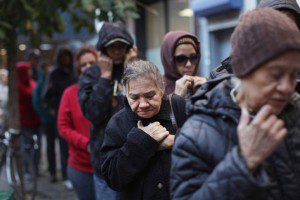 Incomes at all levels declined as a result of the recent recession, but income gains since the recovery have been captured by the richest Americans, according to a new study released by the Economic Policy Institute (EPI) Monday.
Incomes at all levels declined as a result of the recent recession, but income gains since the recovery have been captured by the richest Americans, according to a new study released by the Economic Policy Institute (EPI) Monday.
In 39 states in the U.S., the top 1 percent captured at least half of all income growth between 2009 and 2012. And in 17 states, all income growth went to the top 1 percent in those years, the EPI found.
“Over this period, the average income of the bottom 99 percent in the United States actually fell (by 0.4 percent),” the study states. “In contrast, the average income of the top 1 percent climbed 36.8 percent. In sum, only the top 1 percent gained as the economy recovered.”
Florida is among the states where the 1 percent got the biggest share of the income gains, 260 percent, second to Delaware where they got 301 percent of income growth, between 2009 and 2012. In fact, in Florida, the bottom 99%’s income has actually gone down by 7.1 percent in the so-called recovery, even as the top 1%’s income rose by 39.4 percent, the EPI found.
Nevada was one of the most unequal states during this period, while West Virginia was the least-unequal state in the country.
Focusing on 2012, the most recent year for which data are available, in Florida, the average income ($1,488,367) of the top 1 percent is 43 times greater than the average income ($34,387) of the bottom 99%.
Reflecting in part, the relative concentration of the financial sector in the greater New York City metropolitan area, New York and Connecticut have the largest gaps between the top 1 percent and the bottom 99 percent. In both states, the top 1 percent in 2012 earned on average 48 times the income of the bottom 99 percent of tax payers.
The study authors note that lopsided income growth is not a recent trend. Rather, its reemergence in the recovery is a continuation of a pattern that began over three decades ago.
“The yawning economic gaps in today’s “1 percent economy” have myriad economic and societal consequences,” the EPI states. For example, growing inequality blocks increases in living standards for the middle class.
“Since the “1 percent economy” is evident in every state, every state—and every metro area and region—has an opportunity to demonstrate to the nation new and more equitable policies,” the EPI study authors declare.
The EPI study uses state-level tax data reported by the IRS and builds on ground breaking research by economists Thomas Piketty and Emmanuel Saez, who analyzed incomes of the top 1 percent, drawing attention to the rising economic inequality in the United States.


